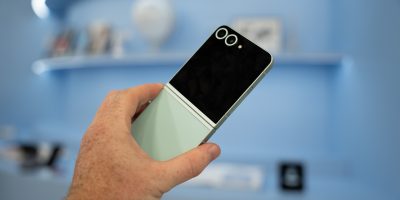The onslaught of foldable Android handsets in the past few years has pushed the industry towards a growing demand for more foldable devices, a market which is currently dominated by Samsung, with competing entries from Honor, Vivo, and Huawei, to name a few. While it took a bit of time, Google has finally entered the ring with its own heavyweight contender, the Pixel Fold.
Announced during Google’s I/O 2023 conference, the Pixel Fold is a landmark device for Google. While it is a first-generation device, the company seems confident that the Pixel Fold will be able to handle the competition – but what exactly does it offer? Let’s take a look.
Design and Displays
![]()
In terms of design, the Pixel Fold does bear resemblance to other foldable Android devices, and you might not even be able to tell it apart at first glance. Stare a little longer though, and the nuances in design become more apparent.
For one, there’s a satisfyingly-wide external OLED display with a 17.4:9 aspect ratio, measuring 5.8-inches and features a 2092×1080 pixel resolution, a 120Hz refresh rate, and 408 PPI. It’s also protected by a layer of Gorilla Glass Victus, and maxes up to 1200 nits (HDR) and up to 1550 nits (peak brightness).
![]()
Open it up though, and you are greeted by an OLED display that measures 7.6-inches, with a 2208 x 1840 resolution, 6:5 aspect ratio with 380 PPI, in addition to a 120Hz refresh rate. Google says that the display features “ultra-thin glass” with protective plastic layer, similar to what Samsung has done with some of its foldable devices. The display goes up to 1000 nits (HDR) and up to 1450 nits (peak brightness), and is flanked by some (admiteddly) thick bezels.
Going over other aspects of the design, the Fold’s hinge comes with a polished steel material, which Google says features a “custom dual-axis, quad-cam synchronized mechanism” which offers a 180° range of motion for different angles. There’s a side-mounted power button that also doubles as a fingerprint scanner, in addition to face unlock for biometrics. This build is protected by some much-welcome IPX8 certification, meaning you’ll be able to use your phone in light rain and such.
Internal Hardware and Cameras
![]()
Powering the Pixel Fold is Google’s Tensor G2 chipset, the same chip found in the Pixel 7a and the rest of the Pixel 7 series. This is backed by 12GB of RAM and up to 256GB of internal storage, with Google’s Titan M2 chip onboard. There’s also a 4,821 mAh battery onboard, which Google says comes with support for fast-charging as well as wireless charging.
As for software, the device will ship with Android 13 and Google’s Material UI, with up to five years of software support. It also features a more cohesively-designed interface, which allows for better multi-tasking and a more fluid user experience.
As for imaging, there’s an external front camera with a 9.5MP resolution, ƒ/2.2 aperture and fixed focus, while the internal front camera comes with an 8MP sensor, ƒ/2.0 aperture with fixed focus. The big highlight of the cameras on here are the lenses on the device’s rear panel, which come with a trio of sensors. There’s a 48MP main sensor with OIS, ƒ/1.7 aperture and a 1/2″ image sensor size, joined by a 10.8MP ultra-wide camera with ƒ/2.2 aperture, and a 10.8MP telephoto camera with ƒ/3.05 aperture.
One big advantage that the Pixel Fold has with competing foldables is Google’s computational photography, which should provide great image quality. With that said, the Pixel Fold will feature a lot of Google’s camera features, such as astrophotography, portrait mode, and other Pixel photo features.
Availability
![]()
Available in Porcelain and Obsidian color variants, the Pixel Fold will be sold in several regions worldwide. users can also grab Google’s first-party case for the fold, which comes in three different colors. Interested users can pre-order the device for today at $1799 (which ships next month), with a free Pixel Watch when they pre-order.









Comments